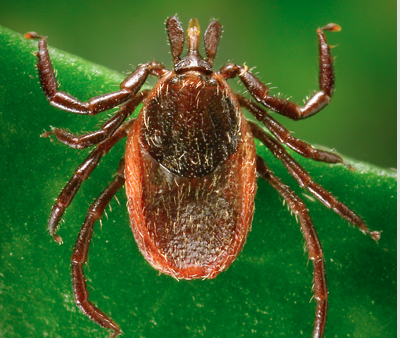A new species of bacteria can transmit human Lyme disease, but officials at the Centers for Disease Control and Prevention (CDC) said it should not affect how the disease is diagnosed and treated. 

Until now, Borrelia burgdorferi was the only known cause of Lyme disease in North America.
Scientists at Mayo Clinic in Rochester, Minn., first suspected the possibility of new bacteria after laboratory tests from six people with suspected Lyme disease produced unusual results (Lancet Infect Dis 2016 Feb 8. [Epub ahead of print]). Additional genetic testing at Mayo Clinic and the CDC found that the bacteria, provisionally named Borrelia mayonii, is closely related to B. burgdorferi.
“This discovery adds another important piece of information to the complex picture of tickborne diseases in the United States,” said Jeannine Petersen, PhD, a microbiologist at the CDC.
So far, the new Lyme species has been found only in the Upper Midwest, according to the CDC.
Limited information from the first six patients suggests that illness caused by B. mayonii is similar to that caused by B. burgdorferi, but with a few possible differences. Like B. burgdorferi, B. mayonii causes fever, headache, rash and neck pain in the early stages of infection (days after exposure) and arthritis in the later stages of infection (weeks after exposure). Unlike B. burgdorferi, however, B. mayonii is associated with nausea and vomiting, diffuse rashes (rather than a single “bull’s-eye” rash) and a higher concentration of bacteria in the blood.
The researchers believe that, like B. burgdorferi, B. mayonii is transmitted to humans by the bite of an infected blacklegged or deer tick. B. mayonii has been identified in deer ticks collected in at least two counties in northwestern Wisconsin. The likely exposure sites for the patients described in The Lancet Infectious Diseases are in north central Minnesota and western Wisconsin. It is highly likely, however, that infected ticks are found throughout both states, the researchers said.
The newly recognized species was discovered when six of approximately 9,000 samples drawn from residents of Minnesota, Wisconsin and North Dakota with suspected Lyme disease between 2012 and 2014 were found to contain bacteria that were genetically distinct from B. burgdorferi. Scientists analyzed the DNA sequences of these bacteria and found that they belonged to a previously unrecognized Borrelia species. Blood from two of the patients also was tested by culture at the CDC, whereby the organism is grown in the laboratory.
To date, the evidence suggests that the distribution of B. mayonii is limited to the Upper Midwest. The new species was not identified in any of the approximately 25,000 blood samples from residents of 43 other states with suspected tickborne disease taken during the same period, including states in the Northeast and Mid-Atlantic region where Lyme disease is common.
The CDC said current tests and treatments should work against this new strain. Results from the cases described in this report suggested that patients infected with B. mayonii will test positive for Lyme disease with currently available FDA-cleared Lyme disease tests. Specific identification of the organism can be made by using polymerase chain reaction assays, which detect the DNA of the Lyme disease bacteria. In some instances, B. mayonii bacteria also may be evident on a blood smear.
The patients described in this report were treated successfully with antibiotics commonly used to treat Lyme disease caused by B. burgdorferi. The CDC recommended that health care providers who treat individuals infected with B. mayonii follow the antibiotic regimen described by the Infectious Diseases Society of America.
